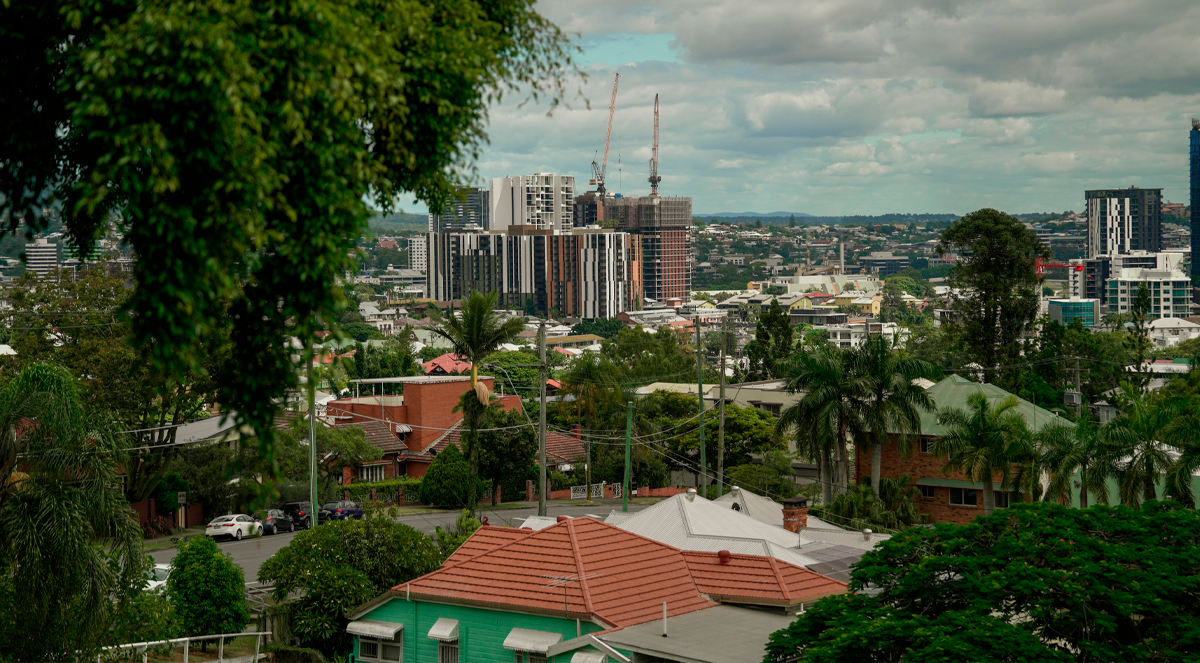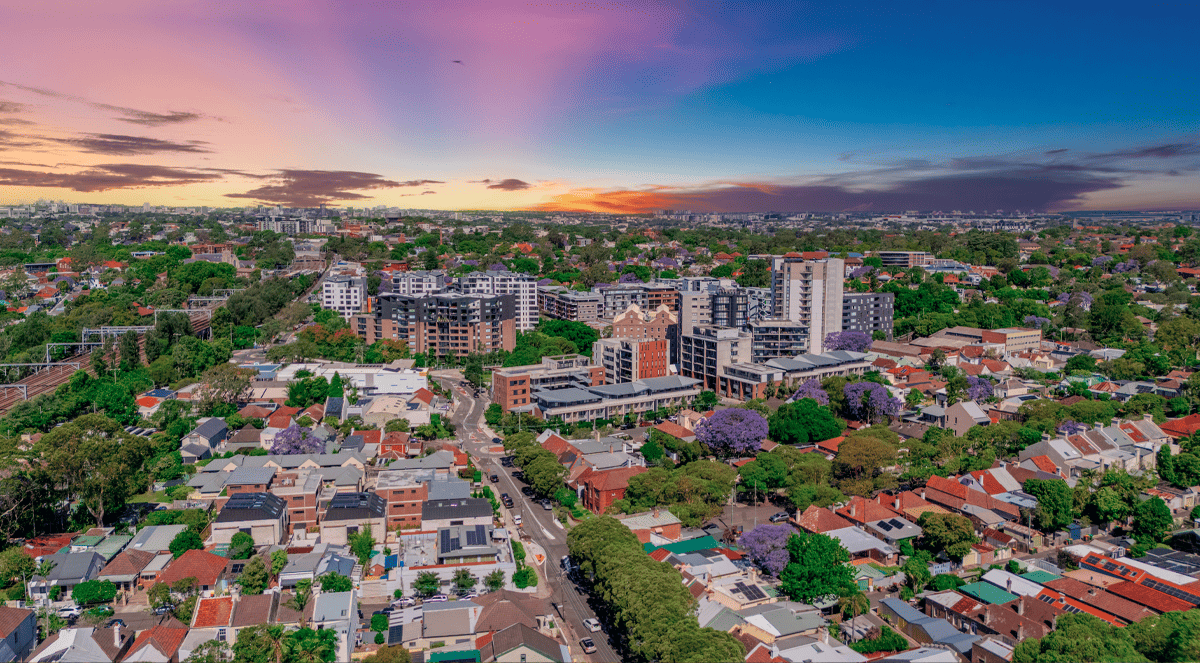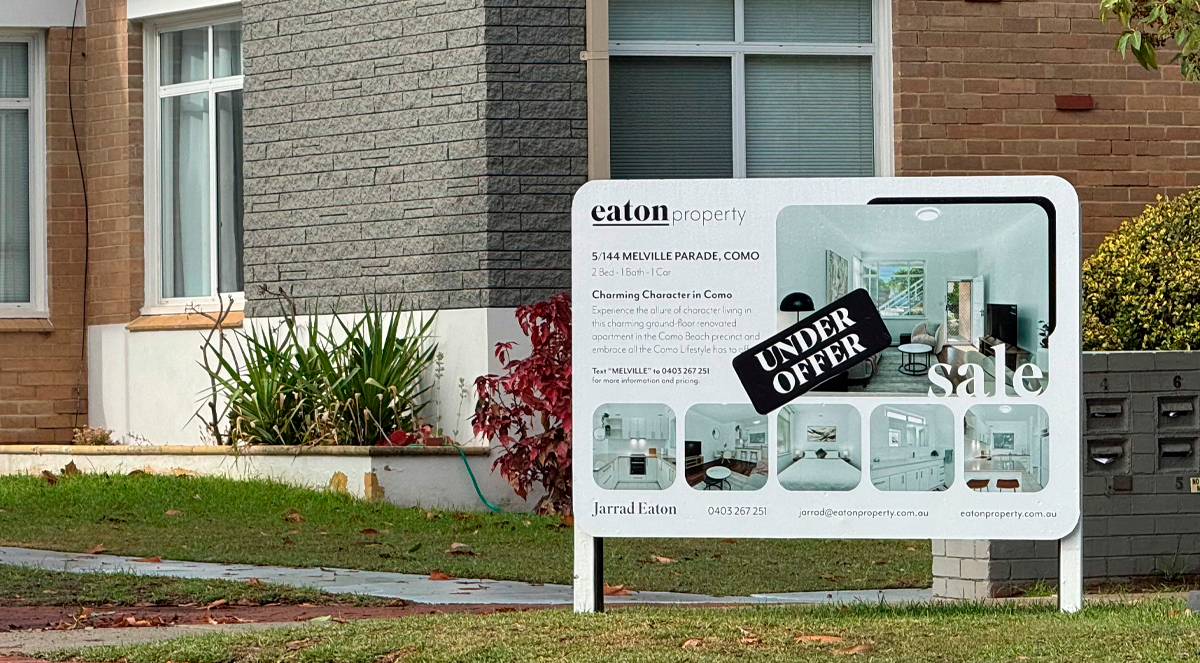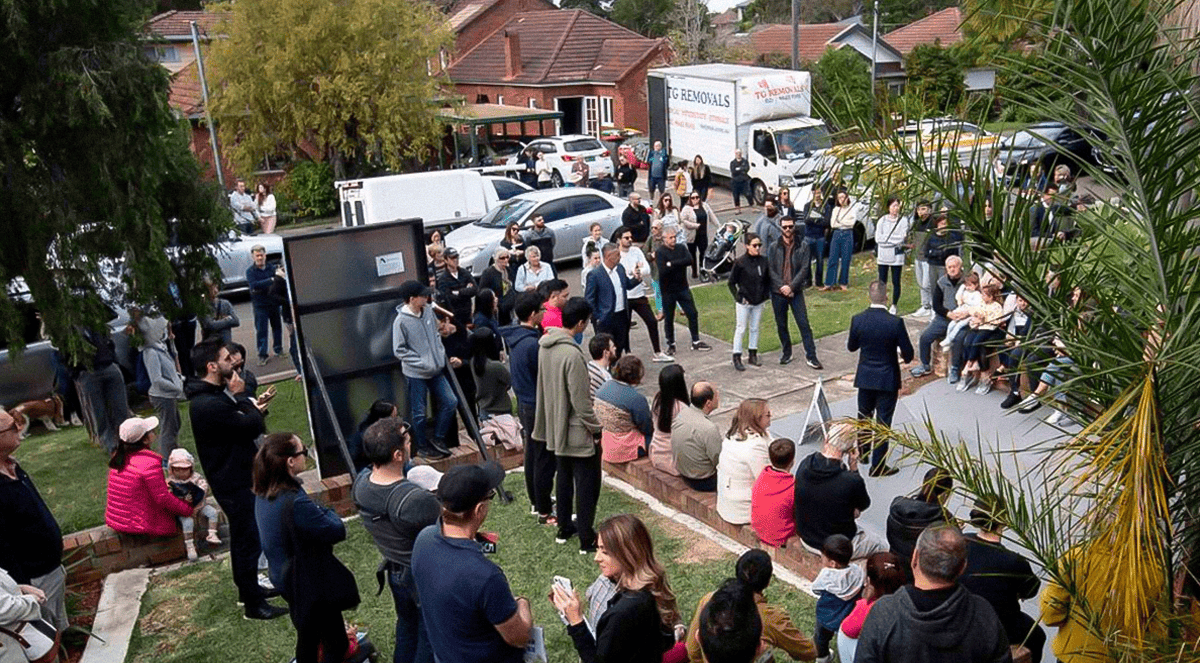Features > Property News & Insights > Market updates
Settlement data underlines strength of Australian property

Image by Dion Georgopoulos/The Sydney Morning Herald
KEY POINTS
- Australians spent a record $714.7 billion on property in 2024, a 17.3% increase from 2023, despite economic challenges
- An investor exodus from Victoria, due to new taxes and rental regulations, helped first-home buyers and increased interstate investor purchases in other states
- Rapid population growth, construction delays, and high building costs worsened Australia's housing shortage, driving demand for established properties over new builds
New data from property settlement platform PEXA has underlined the strength of the Australian property market in 2024, despite challenges such as high interest rates, a cost-of-living crisis, low housing supply and numerous regulatory changes.
PEXA’s data tracks property settlement trends across Australia’s five mainland states - New South Wales, Victoria, Queensland, Western Australia and South Australia - covering over 95% of all property transactions nationally, so it provides an excellent snapshot of the overall state of the property market.
The details
PEXA tracked settlements for 723,312 properties across Australia’s five mainland states in 2024.
That’s an increase of 7.8% on the previous calendar year.
A staggering $714.7 billion - a new annual record - was spent on property purchases in 2024.
That’s a whopping 17.3% higher than in 2023, despite subdued national home value growth of 4.9% in 2024 and despite declining or stagnating property prices in some capital cities.
While the total number of settlements recorded by PEXA in 2024 was 13.2% less than during the COVID-era housing boom in 2021, it was still 14.4% higher than 2020 and an astonishing 64.2% higher in aggregate value.
Queensland saw the highest number of property settlements with 198,019 in 2024, followed by New South Wales (194,729) and Victoria (187,944).
PEXA says its data appears to show that a large number of property sales by investors in Victoria during 2024 benefitted first-home buyers.
The company says property sales by investors “seem to have increased in Victoria in response to changes to taxation and rental regulations for residential property.
“New loan volumes in 2024 reflect a higher share of property settlements with a loan in Victoria, and are therefore more likely to be first-home buyers.”
PEXA says this trend of investors exiting Victoria in 2024 had an impact elsewhere in Australia, “with other states reporting an increase in interstate investor purchases.”
The settlements platform says that “a broader recovery in the Australian property market resulted in all regions experiencing positive residential sale settlement growth (despite median price reductions in Victoria).”
It notes the most popular location was Greater Sydney, where residential settlements grew by 13.3% to 116,360 in 2024.
Regional Victoria was a laggard, with residential settlement volumes only growing by 2.6%.
However, residential property sales in Greater Melbourne grew by 7.9%, which PEXA says was “likely buoyed by higher listing volumes as landlords offloaded their rental properties and first-home buyers responded to (gently) falling prices in established suburbs.”
Victoria also is home to the suburb with the most settlements in 2024, with Tarneit in the city’s outer-west seeing 6,133 properties change hands.
It was closely followed by Craigeburn in Melbourne’s outer north with 5,794 settlements.
Marsden Park in Sydney’s outer north-west was the top suburb for settlements in Sydney with 3,257, while Newtown in Toowoomba topped the Queensland list with 3,479 settlements.
“Postcodes that feature on the top-10 lists for each state reflect those with a high level of residential development and thus, reflect where new housing supply is being added,” PEXA states.
More generally though, PEXA notes that “new home construction is not keeping pace with ongoing strong demand” and “construction delays, high building costs and a growing number of insolvencies for homebuilders have pushed more prospective homebuyers to purchase established properties, rather than build their own.”
PEXA says this has been happening at a time of high population growth.
The “adult population grew at a record rate of 2.8% in the year to June 2024, following growth of 2.6% to June 2023, due to very rapid net migration.
“Surging arrivals plus fewer departures has added over 1.1 million adults (aged 15+ years) in just two years.”
PEXA’s economic team says that while some of this growth has been a ‘catch-up’ following the COVID disruptions to normal migration flows, “this rapid pace of growth in such a short timeframe has exacerbated Australia’s housing demand and supply imbalance, as the nation has struggled to house so many new residents in the right locations.”
PEXA notes that the average household size – or the average number of people per home – “dropped significantly during COVID, exacerbating a long-term trend towards smaller households and adding an estimated million homes to national demand (Reserve Bank of Australia estimate).”
But, it says “this trend only partially unwound during 2024 and so more homes are required, just to meet current demand.”
The take-out from the PEXA report is clear:
The ongoing housing shortage and strong demand because of high population growth will keep the Australian residential property market strong and growing, despite challenges like high interest rates and tough economic times.
Stay Up to Date
with the Latest Australian Property News, Insights & Education.




.png?width=292&height=292&name=Copy%20Link%20(1).png)
 SIGN UP FOR FREE NEWSLETTER
SIGN UP FOR FREE NEWSLETTER





.jpg?width=1920&height=1080&name=Warning%2c%20You%20Might%20Be%20Facing%20Higher%20Taxes%20Soon%20(1).jpg)





.png?width=1920&height=1080&name=Rate%20Drops%20Signal%20BIGGEST%20Property%20Boom%20in%20DECADES%20(1).png)

.jpg?width=1920&height=1080&name=Labor%20vs%20Liberal%20These%20Housing%20Policies%20Could%20Change%20the%20Property%20Market%20Forever%20(1).jpg)
.jpg?width=1920&height=1080&name=QLD%20Slashes%20Stamp%20Duty%20Big%20News%20for%20Investors%20%26%20Home%20Buyers%20(1).jpg)
.jpg?width=1920&height=1080&name=Trump%20Just%20Slapped%20Tariffs%20%E2%80%93%20Here%E2%80%99s%20What%20It%20Means%20for%20Australia%20(1).jpg)
.jpg?width=1920&height=1080&name=Federal%20Budget%202025%20More%20Debt%2c%20No%20Housing%20%E2%80%93%20Here%E2%80%99s%20What%20You%20Need%20to%20Know%20(1).jpg)
.jpg?width=1920&height=1080&name=Australias%20Housing%20Crisis%20is%20about%20to%20get%20MUCH%20Worse%20(New%20Data%20Warns).jpg)
%20(1).jpg?width=1920&height=1080&name=Australias%20RENTAL%20CRISIS%20Hits%20ROCK%20BOTTOM!%20(2025%20Update)%20(1).jpg)
%20(1).png?width=1920&height=1080&name=Is%20Adelaide%20Still%20a%20Good%20Property%20Investment%20(2025%20UPDATE)%20(1).png)
.jpg?width=1920&height=1080&name=RBA%20Shocks%20with%20Rate%20Cuts!%20What%E2%80%99s%20Next%20for%20Property%20Investors%20(1).jpg)
%20(1).jpg?width=1920&height=1080&name=I%20Predict%20The%20Feb%20Rate%20Cut%20(My%20Price%20Growth%20Prediction)%20(1).jpg)
.png?width=1920&height=1080&name=Why%20Property%20Prices%20Will%20Rise%20in%202025%20Market%20Predictions%20(1).png)
.jpg?width=1920&height=1080&name=Why%20Investors%20Are%20Choosing%20Apartments%20Over%20Houses%202%20(1).jpg)
.jpg?width=1920&height=1080&name=Why%20Rate%20Cuts%20Will%20Trigger%20A%20Property%20Boom%20(1).jpg)
.jpg?width=1920&height=1080&name=Retire%20On%202Million%20With%20One%20Property%20(Using%20SMSF).jpg)
.jpg?width=1920&height=1080&name=4%20Reasons%20Why%20You%20Should%20Invest%20in%20Melbourne%20Now%20(1).jpg)
%20(1).jpg?width=1920&height=1080&name=Old%20Property%20vs%20New%20Property%20(Facts%20and%20Figures%20Revealed)%20(1).jpg)
%20(1).jpg?width=1920&height=1080&name=Will%20The%20New%20QLD%20Govt%20Create%20a%20Property%20Boom%20or%20Bust%20(My%20Prediction)%20(1).jpg)
%20Scott%20Kuru%20(1).jpg?width=1920&height=1080&name=Inflation%20Hits%20Three-Year%20Low%20(Will%20RBA%20Cut%20Rates%20Soon)%20Scott%20Kuru%20(1).jpg)
.jpg?width=1920&height=1080&name=How%20to%20Buy%20Investment%20Property%20Through%20SMSF_%20The%20Ultimate%20Guide%20(1).jpg)
.jpg?width=1920&height=1080&name=Victoria%20Slashes%20Stamp%20Duty%20Melbourne%20Set%20to%20Boom%20Scott%20Kuru%20(1).jpg)
.png?width=1571&height=861&name=Are%20Foreign%20Buyers%20Really%20Driving%20Up%20Australian%20Property%20Prices%20(1).png)
.jpg?width=1920&height=1080&name=The%20Single%20Factor%20That%20Predicts%20Property%20Growth%20Regions%20(1).jpg)
%20Scott%20Kuru%20(1).jpg?width=1920&height=1080&name=My%20Prediction%20On%20Rates%20%26%20Negative%20Gearing%20(Market%20Crash)%20Scott%20Kuru%20(1).jpg)

-1.png?width=1920&height=1080&name=Major%20Banks%20Cut%20Rates%20Will%20RBA%20Follow%20Suit%20(Sept%20Rate%20Update)-1.png)
%20Scott%20Kuru-1.png?width=1920&height=1080&name=Rate%20Cut%20Coming%20What%20New%20Zealands%20Move%20Means%20for%20Australia%20(Sept%20Prediction)%20Scott%20Kuru-1.png)
%20(1).jpg?width=1920&height=1080&name=Buy%20when%20the%20interest%20rates%20are%20high!%20(Why%20you%20must%20buy%20now!)%20(1).jpg)
.jpg?width=1920&height=1080&name=Carms_Revised%20Taxes%20Due%20Aug%209%20YT%20Thumbnail02%20(1).jpg)
.jpg?width=1920&height=1080&name=Carms_Too%20Little%20Too%20Late%20Aug%207%20YT%20Thumbnail01%20(1).jpg)









.jpg?width=1920&height=1080&name=Carms_Rate%20Drop%20In%20July%20Jun%2010%20YT%20Thumbnail02%20(1).jpg)
.jpg?width=1920&height=1080&name=Carms_Own%20a%20Property%20V6%20Jun%205_YT%20Thumbnail%20(1).jpg)









.png?width=1920&height=1080&name=Artboard%201%20(3).png)






.jpg?width=1920&height=1080&name=YT%20thumbnail%20%20(1).jpg)

